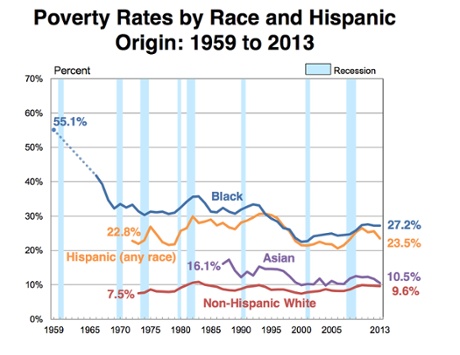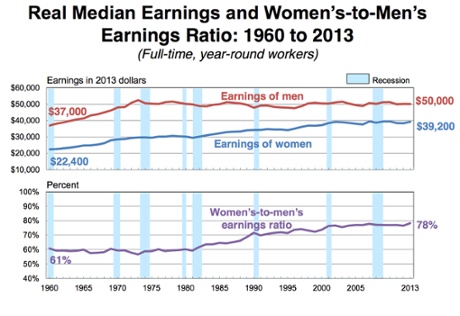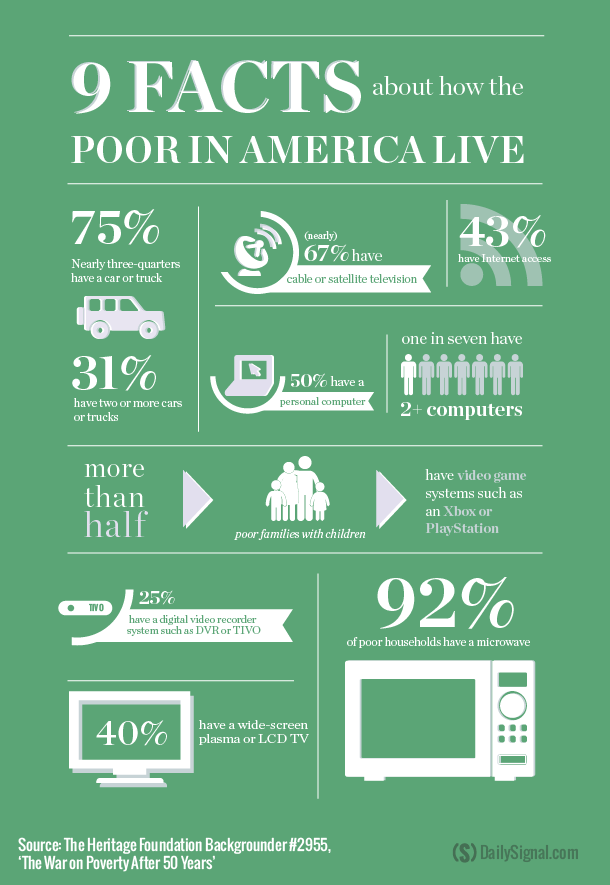
Ask American women and children: poverty rates in the US have shown little improvement since the financial crisis in 2008.
That’s the message from the US Census Bureau, which released itsannual report on poverty.
Women are still making $10,800 less each year than men, earning only 78 cents to every dollar a man earns. That’s said to be an improvement over 77 cents last year.
And one in five US children live in poverty, the report showed.
Here are the five most important takeaways from today’s report, which show that America is still distant from solving its thorniest economic problems.
The poverty rate for children under 18 years old is 19.9%
That means about one in five children live in poverty. The US is already ranked 34 out of 35 developed countries for child poverty, according to the UN Children’s Fund.
There is some good news, however. The overall poverty rate for US children did fall – to 19.9% in 2013 from 21.8% in 2012, according to the US Census Bureau:
The number of children in poverty also declined over the period, from 16.1m to 14.7m. This was the first time since 2000 that the child poverty has declined.

There are more full-time jobs
The small drop in the poverty rate can be attributed to the increase in full-time employment, according to the Census Bureau.
There were about 60.8m men and 45.1m women working full time in 2013, according to the bureau. That meant 1.8m men and 1m women found full-time jobs in that year.
About 1m of these new full-time workers were parents, a US Census spokesman told reporters on a conference call.

“There is a rise in year-round full-time employment among parents with children, and that’s having an impact on median household income of households with children and the poverty rate. The poverty rate is down this year and the median household income of households with children is up,” he added.
Currently, there are 118.6m full-time workers in the US, according to the August jobs report. That’s a 2m increase since August of 2013.
These gains may sound impressive, but they’re not putting a dent in the US unemployment crisis. Labor-force participation, a measure of how many Americans have jobs, is at lows not seen since the recession of the early 1980s.
Americans are earning less than they did in 2007
Americans are currently earning as much as they were in 1995 when the median household income was $51,719.
Americans still lag in earning the same wages they brought in before the recession. In 2013, the median household income went up just $180, reaching $51,939. The median household income in 2007, was $56,436.
It’s no wonder that 46% of Americans still think that US is in recession, despite the fact that the recovery technically began in June 2009.
Black households lag far behind economically
Sadly, this is nothing new, but the median income for black households was about $23,700 less than that of a white household.
As Guardian US Money columnist Suzanne McGee previously noted:
According to the 2012 US census, African Americans represent 14.2% of the population nationwide, but 28.1% of this group lives in poverty – compared to 11.1% of the total population. Of families with children, that number jumps to a third, compared to 18.8% of families of all races. Unemployment, whether short or long-term, runs at double the rate that white workers experience. If you’re black, you’re significantly more likely to have to spend more than 30% of your monthly income on either rent or monthly occupancy costs.
The poverty rate for blacks fell this year to 27.2%, but that is still almost three times as high as the poverty rate of whites, which remained steady at 9.6%.

“The nation’s level of income inequality continues to be the highest of any Western industrialized nation and worse than even El Salvador, the Dominican Republic, and India,” according to a statement from the New York City Coalition Against Hunger.
Women earn about 78¢ per each dollar a man earns
American women are earning a penny more than they did last year– but don’t spend it all in one place, because it’s not a big trend yet. Compared to last year, when women were earning just 77¢ per every dollar that men did, they’re now earning an additional cent on top of that. This means that in a span of a year, women earn about $10,800 less than men.

“There’s good news and bad news. The good news: the wage gap is shrinking. The very bad news: it’s by only a penny. So this means that women on average still make only 78 cents for every dollar a man makes,” said Fatima Goss Graves, vice president for education and employment at the National Women’s Law Center.
“That means that millions of women and their families continue to slide backwards year after year,” Graves said. “We can and must do better than this. It’s time to close the wage gap now.”
This news comes just one day after Republicans blocked the Paycheck Fairness Act for the fourth time since 2012.
And then there are those who think poverty is being overstated. The conservative Heritage Foundation offered this rebuttal to the poverty figures:
Priceless reaction from @Heritage to the latest poverty data: They want to remind us just how good the poors have it. pic.twitter.com/4oZkIyTqx1

 Justin Wolfers
Justin Wolfers
No comments:
Post a Comment